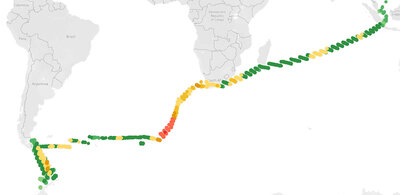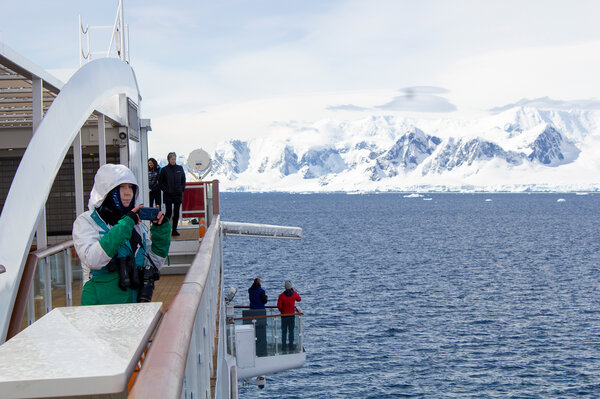Peter was not looking forward to the journey from South Africa to Ushuaia.
"I have one problem; I get seasick looking at water. I have tried every type of seasickness medication under the sun, with very little effect."
Hesitated
Despite working in polar regions since 2001, crossing the Drake Passage or the Denmark Strait has always been a challenge for him. When his company asked him to join the transit from Cape Town to Ushuaia, he hesitated but eventually accepted.
Different-looking design to tackle rough conditions
The 'Greg Mortimer' is the first expedition cruise ship designed with the ULSTEIN X-BOW®; a feature initially developed for offshore vessels operating in rough waters.
Within 24 hours of departing Cape Town, the ship hit its first storm. Peter, on minimal medication, managed to work welding, grinding, and installing new equipment despite waves averaging 8-10 metres high.
"It was absolutely spectacular! She's one, sweet ride," Peter said, impressed by the experience.

So, can ship design cure seasickness?
Ship design, including the X-BOW hull line design, cannot cure or prevent seasickness, but it can influence it. Motion sickness results from the brain receiving conflicting messages and relates to a disturbance of the inner ear. When seated in your cabin, your body still senses the movements from the sea, which can cause seasickness.
Ship designers can work purposefully to help avoid the perception of seasickness onboard vessels. The location of spaces along the vessel's length, the ship's response to waves, current, and wind, and the amount and quality of light and ventilation are effective measures. The X-BOW enhances the ship's response to waves, reducing slamming and vibrations, thus increasing comfort in head seas.
The size of windows and the location of public areas and passenger cabins critically affect the perception of seasickness. Details like the positioning of beds can influence sleep quality, and lack of sleep affects seasickness. In MV 'Greg Mortimer,' all beds are longitudinally arranged to improve sleep. The ULSTEIN CX103 cruise design, which the 'Greg Mortimer' is based on, has paid special attention to these elements, placing passenger cabins and public areas in the centre of the vessel, where pitch motion is the lowest.





